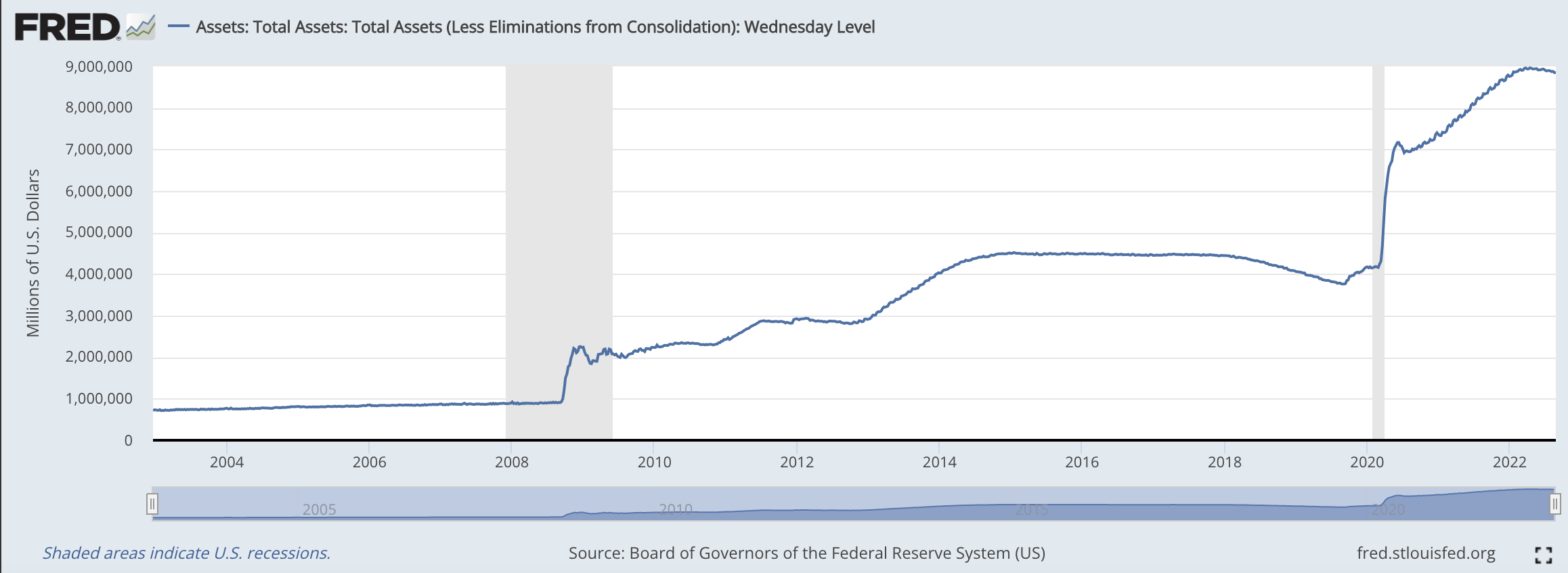The Fed will ramp-up the wind-down of its balance sheet starting in September by $95 billion a month. Investors should consider reducing risk as the wind-down accelerates while interest rates climb, says investment firm Glenmede. The further balance-sheet reduction adds a ‘hard-to-measure’ impact to the stock market. Loading Something is loading.
Investors have been focusing on the Federal Reserve’s fast pace of large rate hikes this year but another risk is on the horizon, says wealth manager Glenmede in suggesting investors reduce their exposure to stocks.
In September, the central bank is scheduled to ramp up its balance-sheet reduction to a maximum of $95 billion per month, a move aimed at winding back the stimulus efforts the Fed put in place in March 2020 when the COVID-19 outbreak was spreading worldwide.
“Such actions should withdraw liquidity from the financial system, adding a hard-to-measure impact on top of [the Fed’s] already aggressive rate-hiking campaign,” Jason Pride, Glenmede’s chief investment officer of private wealth, said in a note Monday.
The Fed in May began winding down holdings of Treasury securities, including short-term debt, and mortgage-backed securities, but that pace soon will accelerate. The Fed’s balance sheet more than doubled to $8.9 trillion after the COVID-19 outbreak as the central bank pushed cash into the financial system to cushion the pandemic’s blow to the economy.
The flow of money contributed to propelling inflation to a four-decade high and helped the world’s largest economy recover from the crisis shock. As the Fed ratchets up its balance-sheet reduction, it’s also on course to deliver the fifth interest rate increase of 2022 at its September meeting.
“In the wake of an accelerated pace of rate increases, monetary policy is approaching neutral quickly, to a level that should restrain the economy. Investors should continue to reduce market (equity) risk in light of recessionary trends and still-high valuations,” said Pride.
US stocks, after rebounding from lows in June, have returned to levels at which they command significant premiums to fair value, he said.
Glenmede said a growing collection of data points appear to provide evidence of a slowdown although there have been mixed signals from the economic front, including a drop in sales of new houses that should ease inflation pressures.
Glenmede, which oversees $45 billion in assets under management, said analysts have been reducing per-share earnings estimates for 2023 for the S&P 500 index. Estimates over the last month have declined to around $244 per share from $252 per share at the start of the second-quarter earnings season.
Fed Chairman Jerome Powell said American households will experience “some pain” as the central bank raises interest rates to bring down inflation by taking some heat out of the economy. Its goal in slowing the economy is to return inflation to the 2% target. Headline inflation in July was 8.5%. Gross domestic product in the second quarter contracted by 0.6% after shrinking by 0.9% in the first quarter.
The benchmark interest rate currently stands at a range of 2.25%-2.5%.
A chart shows the Federal Reserve’s balance sheet. Federal Reserve Deal icon An icon in the shape of a lightning bolt. Keep reading
More: MI Exclusive Stocks S&P 500 Nasdaq Composite Chevron icon It indicates an expandable section or menu, or sometimes previous / next navigation options.
